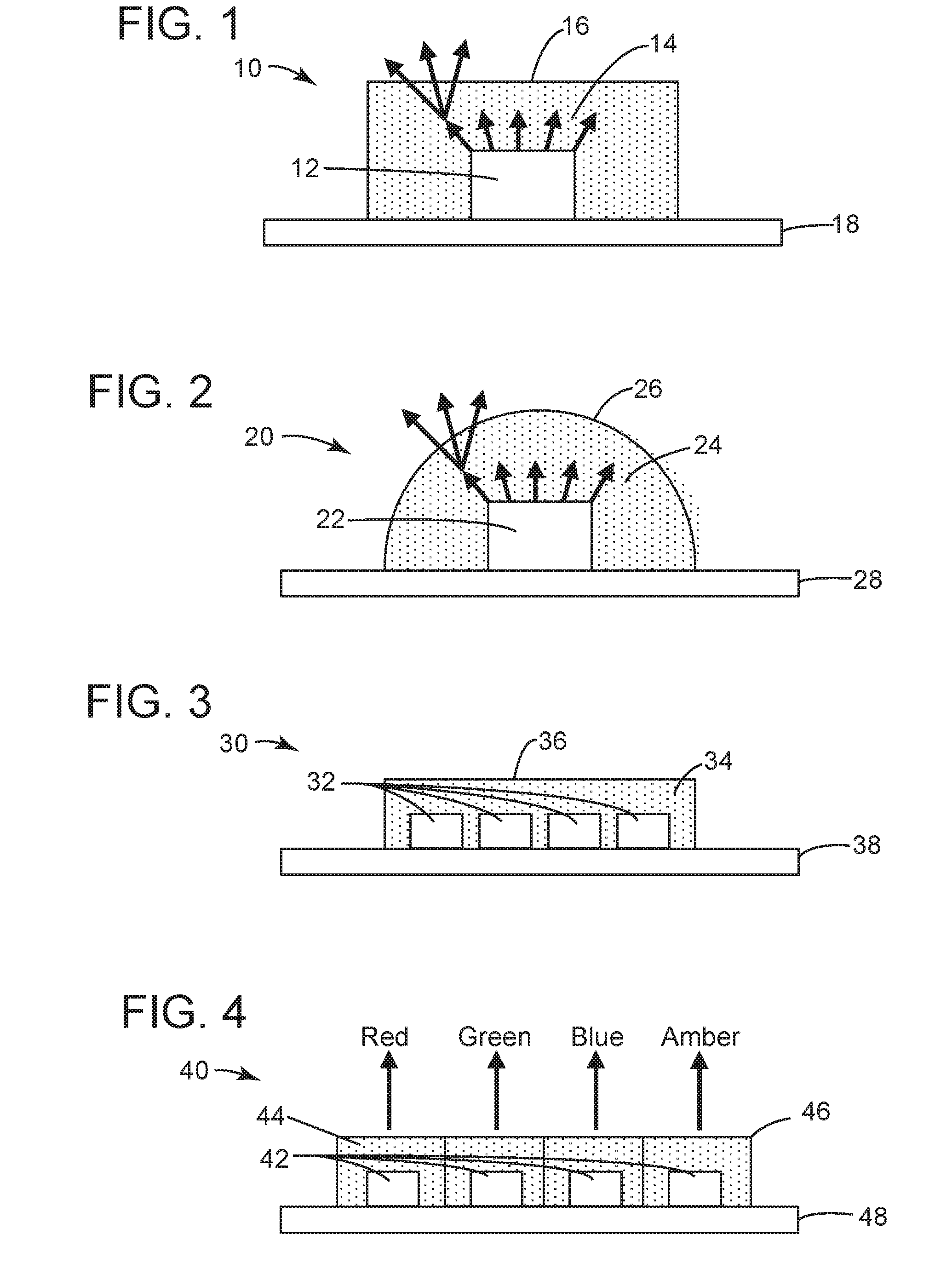Single diode disinfection
a single diode and disinfection technology, applied in the field of single diode disinfection, can solve the problems of less frequent use, lower efficiency and cost performan
- Summary
- Abstract
- Description
- Claims
- Application Information
AI Technical Summary
Benefits of technology
Problems solved by technology
Method used
Image
Examples
Embodiment Construction
[0029]According to various embodiments, a lighting device is disclosed that is capable of emitting light that can be perceived as white or a hue of white and simultaneously is capable of emitting certain concentrations of light with specific wavelengths that are associated with the inactivation of at least some microorganisms. The light-emitting device is composed of a light emitter (e.g., LEDs, lasers) and one or more light-converting materials (e.g., phosphors, optical brighteners) assembled in a manner that light emitted from light emitter will be directed into the light-converting material(s) and at least a portion of this light directed into the light-converting material(s) will be converted by the light-converting material(s) to light having a different quality (e.g., a different peak wavelength). Light can be converted by the light-converting material(s) by absorbing the light, which energizes or activates the light-converting material(s) to emit light of a different quality ...
PUM
| Property | Measurement | Unit |
|---|---|---|
| wavelength range | aaaaa | aaaaa |
| wavelength range | aaaaa | aaaaa |
| peak wavelength | aaaaa | aaaaa |
Abstract
Description
Claims
Application Information
 Login to View More
Login to View More - R&D Engineer
- R&D Manager
- IP Professional
- Industry Leading Data Capabilities
- Powerful AI technology
- Patent DNA Extraction
Browse by: Latest US Patents, China's latest patents, Technical Efficacy Thesaurus, Application Domain, Technology Topic, Popular Technical Reports.
© 2024 PatSnap. All rights reserved.Legal|Privacy policy|Modern Slavery Act Transparency Statement|Sitemap|About US| Contact US: help@patsnap.com










